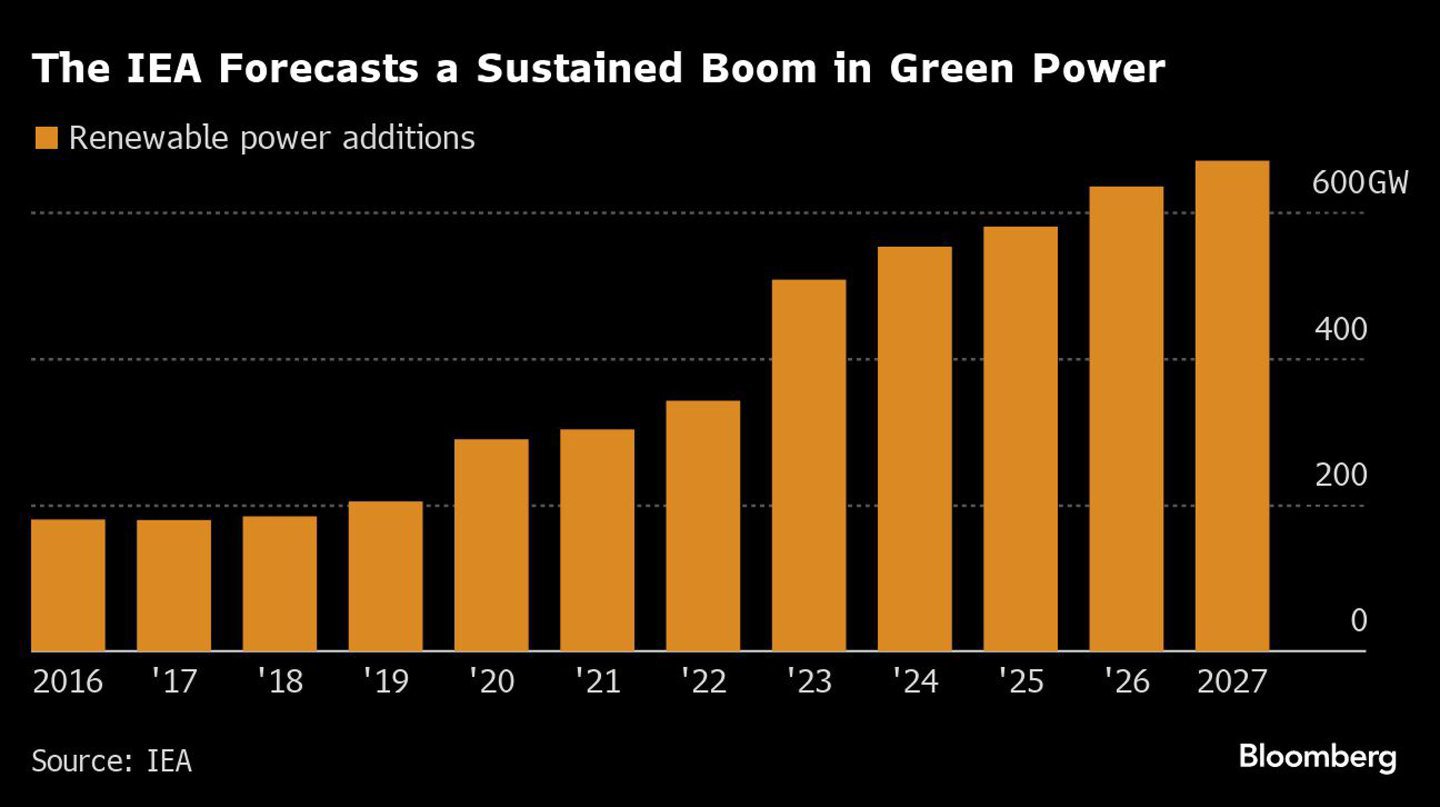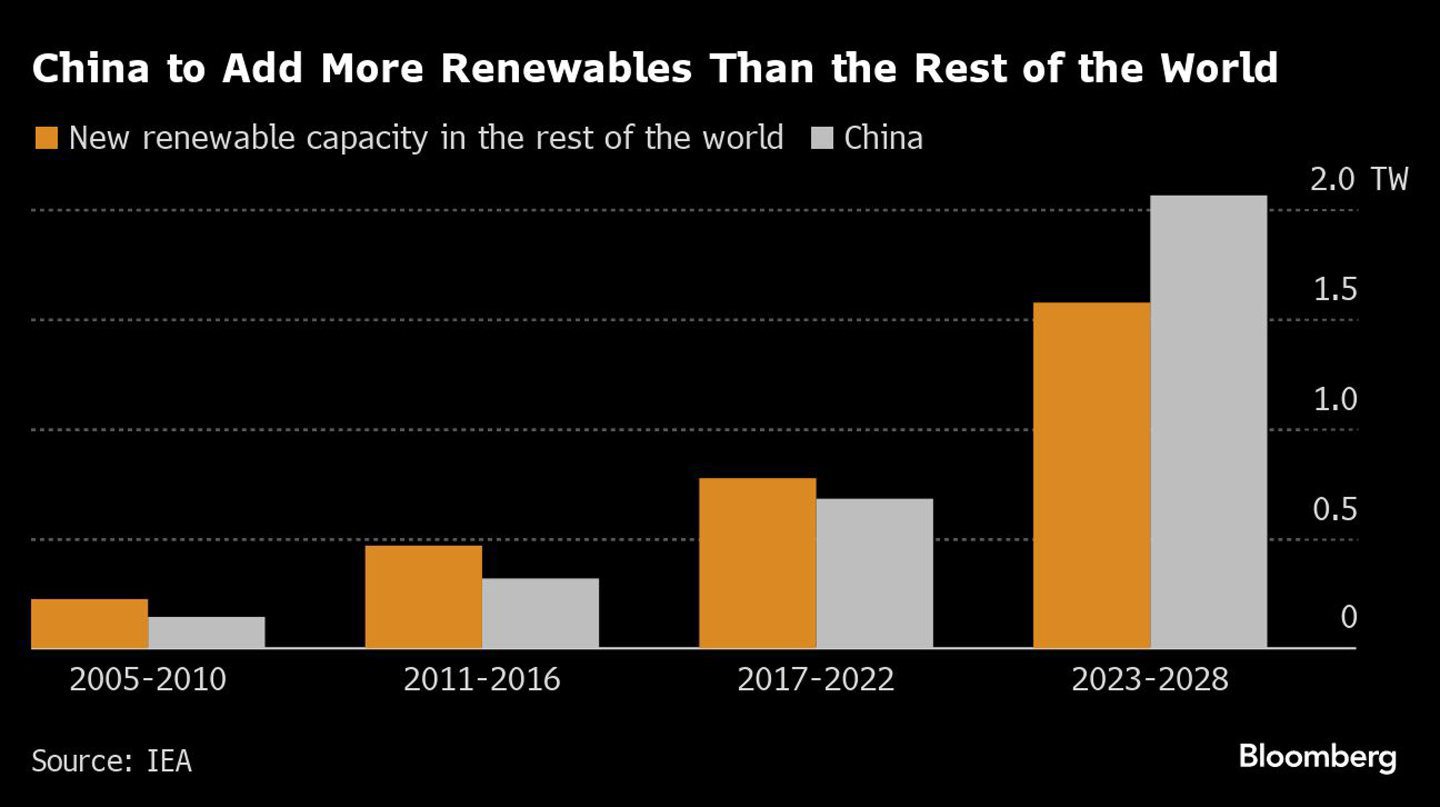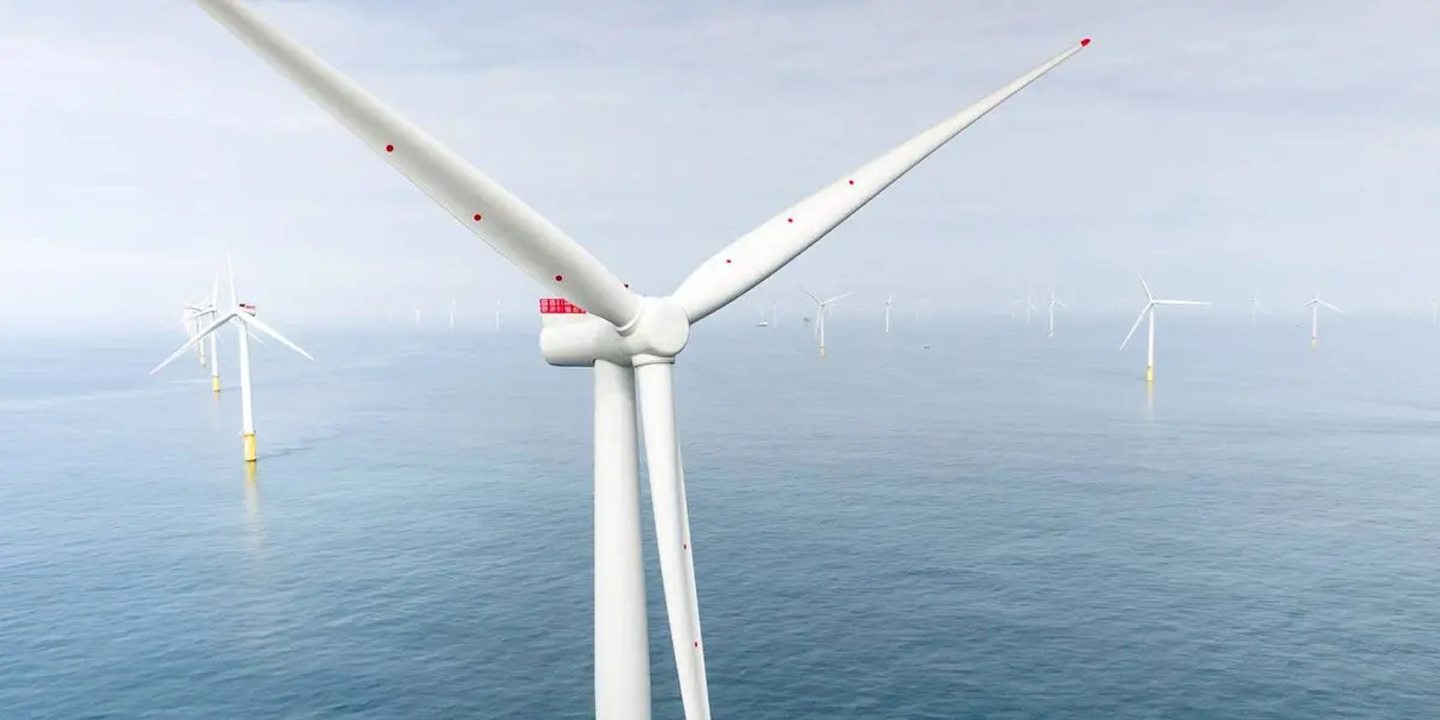
The world’s new renewable power capacity grew by 50% last year and should keep breaking records this decade on the back of a surge in cheaper solar panels, particularly in China.
Almost 510 gigawatts of renewables were installed in 2023, setting a record for the 22nd straight year, the International Energy Agency said. Driven by a huge expansion in China’s solar fleet, the world is inching toward a target set at the COP28 climate summit to triple renewable power by the end of the decade.
“Under current policies and market conditions, global renewable capacity is already on course to increase by two-and-a-half times by 2030,” IEA Executive Director Fatih Birol said. “It’s not enough yet to reach the COP28 goal of tripling renewables, but we’re moving closer – and governments have the tools needed to close the gap.”
Plunging solar panel prices helped China to deploy a record amount of new clean power production in 2023, something that shows little sign of slowing. From 2023 to 2028, the IEA expects the nation to build about 30% more renewable capacity than the rest of the world combined. China’s growth has been so rapid that the IEA raised its six-year clean power forecast for the country by 64%.
Rooftop solar installations are key to the sector’s growth, both in China and elsewhere, as homeowners and businesses turn to the technology to cut energy bills and emissions. The so-called distributed solar sector is set to grow over 200% from 2023 to 2028, compared with the previous six years, exceeding wind power additions, according to the IEA.
Wind power
Wind power, however, is growing at a slower rate after supply chain issues, inflation and higher borrowing costs put projects in Europe and the US in jeopardy, particularly for offshore farms.
For the US, the IEA cut its forecast for new offshore wind capacity by more than 60% after developers cancelled and delayed projects due to rising costs.
The agency also lowered its forecast for wind power in Europe due to project delays and power grid congestion.
Wind power’s growth will need to pick up for the world to be on track to reach climate goals, particularly in places like northern Europe where sunshine is scarce in the winter at a time when power demand peaks.
Recommended for you

 © Supplied by Bloomberg
© Supplied by Bloomberg © Supplied by Bloomberg
© Supplied by Bloomberg © Photo: Jan Arne Wold / Equinor
© Photo: Jan Arne Wold / Equinor